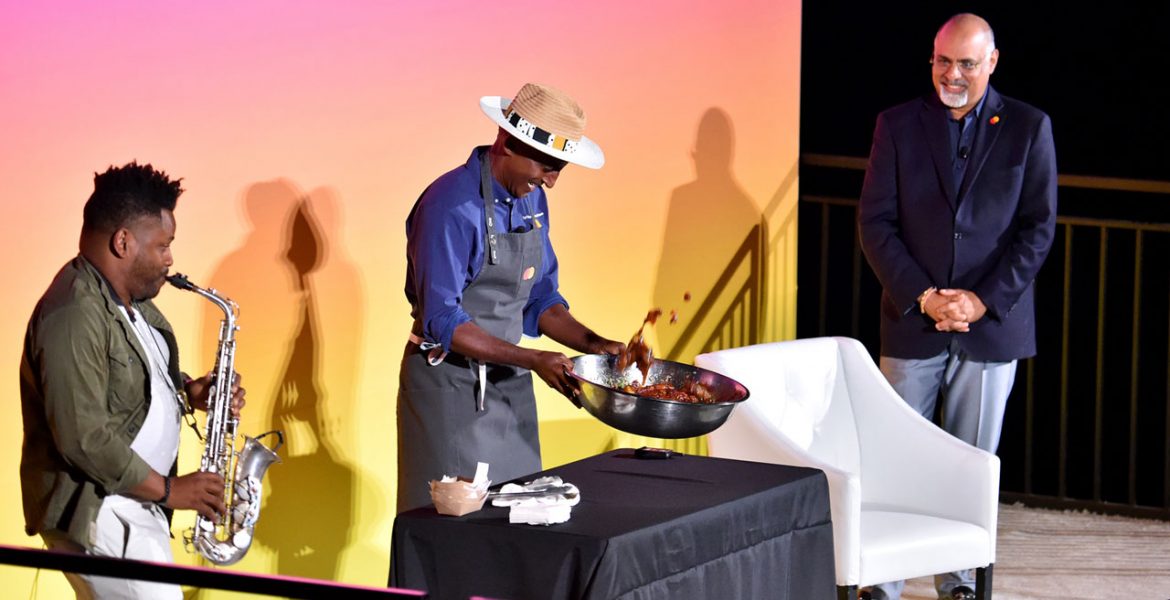Typically, we think of advertising as a one-track visual experience. Raja Rajamannar, Chief Marketing and Communications Officer at MasterCard, is changing that. Through his work at MasterCard, he is creating a more holistic marketing experience that involves a number of the senses and penetrates deeper into the humanity of decision making.
He calls this new era Marketing 5.0, a time of sense and sensibility that will bring the humanity back into advertising after the stark coldness that the advancement of technology has brought along with it.
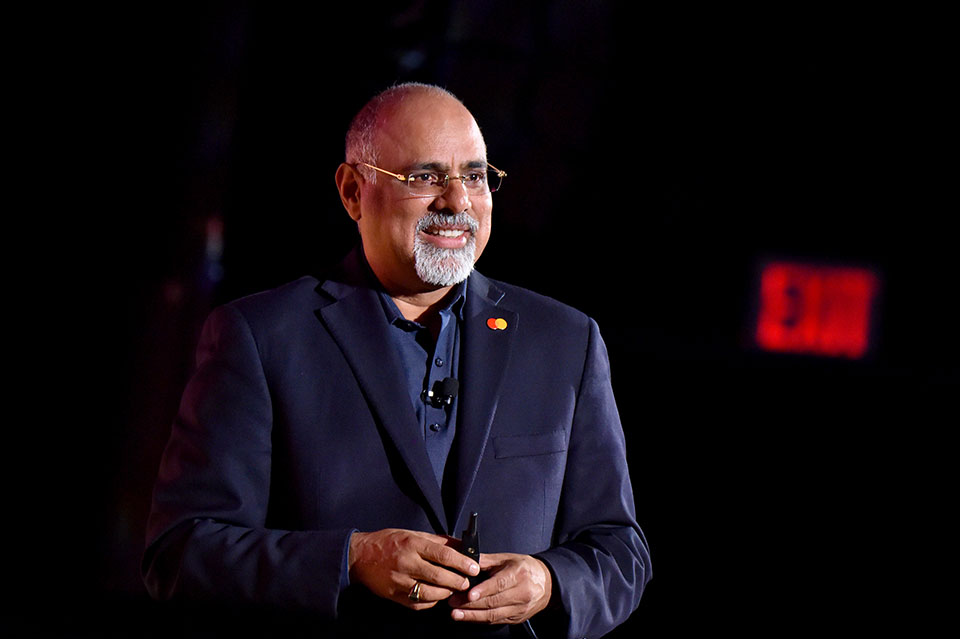
“There is something which is subtle, something which is ethereal that is happening right now, and that to me is Marketing 5.0,” Rajamannar says.
The ethereal future that he talks about is one that taps into the dreams, passions and aspirations of people beyond just selling a product. He breaks it down into a dichotomy called “sense and sensibility.”
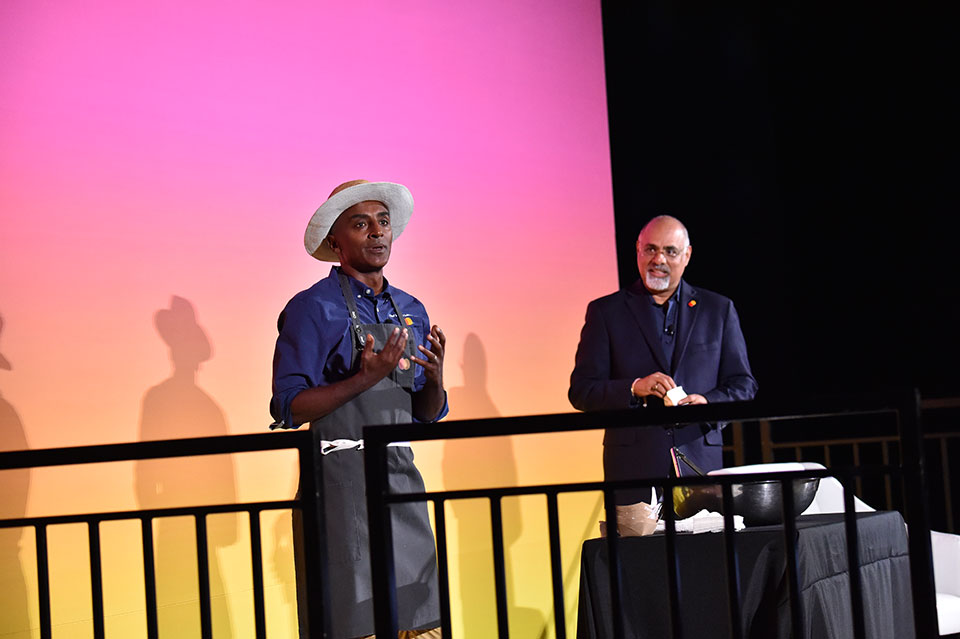
His goal is for consumers to tune back into their senses – return to what they have long learned to tune out. Rajamannar’s strategy cuts through the clutter of daily living with technology by taking a multi-sensory approach that will reignite a spark of passion that’s easily lost in an overly digital world.
Rajamannar’s approach begins with the obvious, sight. People have been consuming visual marketing messages since the dawn of advertising, however, his tactic encompasses a much larger message in a more succinct way.

“The visual representation of your logo is what your brand really stands for. It encompasses all of the values and characteristics of your brand,” he says.
To achieve this, MasterCard has dropped their name from their logo, which creates a minimalistic red and orange crossed circle image that’s easily recognized globally. This change deemphasizes the singular credit card company image they have long possessed and makes way for a broader consumer appeal that goes beyond traditional payments.
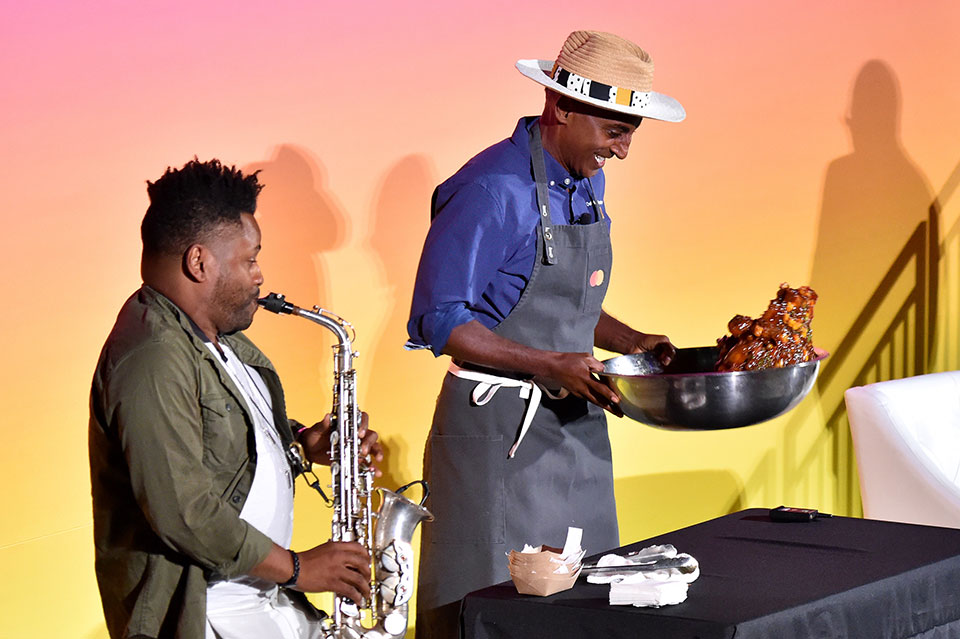
Rajamannar’s next play is to use sound. He explains its significance by referencing the fact that music and sounds are immediately recognizable by the brain and don’t require conscious processing to make a connection.
Rajamannar details the research behind their sonic adventure, but most notably what was absent.
“What we did not find is a comprehensive sonic architecture the way we have a comprehensive visual architecture for our brand,” he says.
By establishing a signature sonic architecture for the brand, he is able to increase the brand’s reputation to something that is noticed by everyone, within seconds, across the globe.
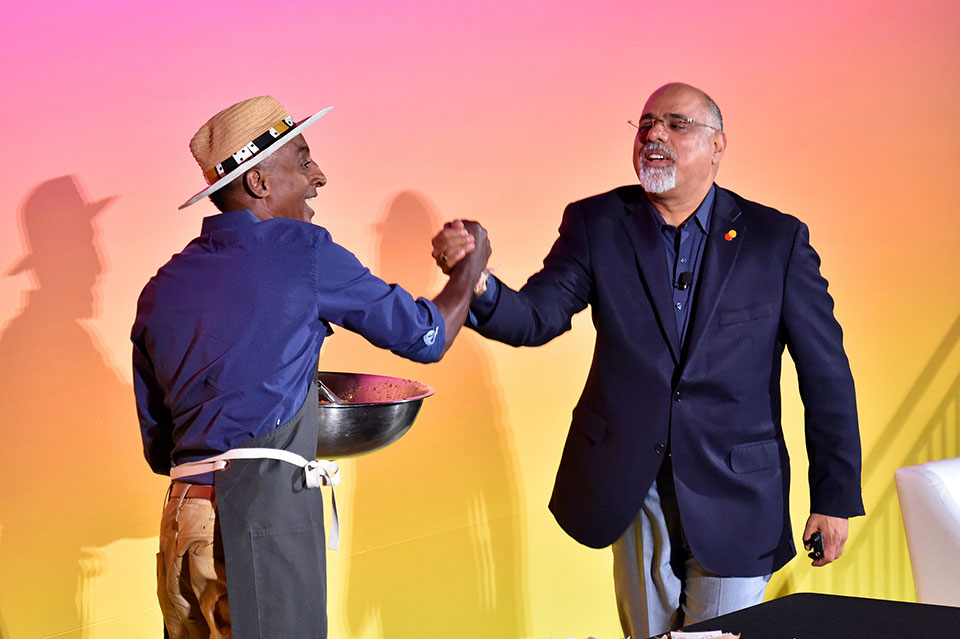
The resulting sonic signature is made up of accompanying melodies that are memorable, adaptable and appropriate in any context. The signature can then be manipulated to fit the needs of any situation, varying in dings and bells depending on the place, process or product.
The final sense to complete the holistic method of Marketing 5.0 is taste. To play on the sense as well as the interests of their customers, MasterCard is creating pop-up restaurants across the globe, taking customer interaction to another level. To add a bit of sweetness, Rajamannar remarked on the brand’s partnership with Ladurée to personalize two macaron flavors named “passion” and “optimism.”
However, the real noteworthy partnership is with chef and author Marcus Samuelson as a brand ambassador.
“To have MasterCard as a partner to say ‘hey, we’re with you, we’re gonna help you realize your dream . . . MasterCard was there from the beginning,” Samuelson says.
Together, they are reaching success through Samuelson’s restaurant Red Rooster and other pop-up spots through holistic advertising because of this out-of-the-box approach.
Tying all of the senses together, Rajamannar emphasizes the importance of maintaining sensibility throughout your business. Today especially creates the perfect climate for companies to move forward in their thinking and encapsulate a more diverse audience.
MasterCard has incorporated social change in a number of ways; however, two notable campaigns were that of “True Name” and “Acceptance Street.” In “True Name,” they surprise transgender and non-binary customers with a card marked with their preferred name, instead of their legal one. For “Acceptance Street,” they transform the street signs on the corner of Christopher and Gay Streets in Greenwich Village to list every member of the LGBTQ+ community and transform the spirit of the area.
These initiatives encapsulate MasterCard’s holistic advertising initiative through their own inclusiveness. Rajamannar’s models make it clear that advertising is more than just selling a product, it is now an industry that can truly affect change in the world.
To conlclude, Rajamannar says, “People expect a lot. They’re spoiled rotten, they want everything from brands. But, it is not what they expect, but when you’re dealing with what they don’t expect is when the magic is created.”
Want to learn more about this and other important industry topics? Be sure to visit AWLearn, Advertising Week’s new your-round education platform.
Photos: Shutterstock / Advertising Week

